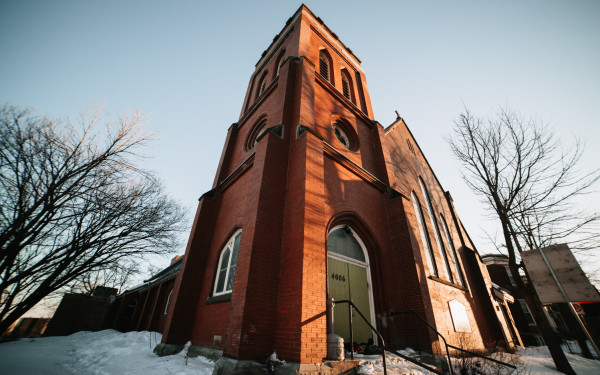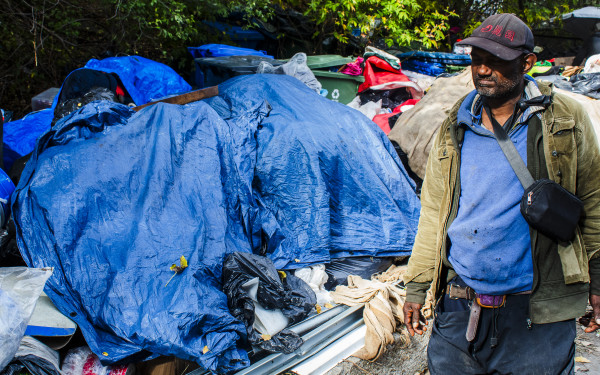Gentrification Factors Into the Bumpy Road for The Open Door
After Being Pushed Out of Westmount, the Homeless Centre Finds a New Home on Parc Ave
Location, location, location—these are the words on the lips of real estate agents hustling new-build condos around the city.
But the words hold importance, too, for those experiencing homelessness in Montreal, a population who, like anyone, develop complex situational relationships and depend on a proximity to services they use.
Yet some residents and business owners, even those who profess a degree of sympathy, find themselves wondering why the displaced can’t go be displaced somewhere else.
This sentiment often plagues resources tailored to the city’s unhoused; the loudest voices cling to new projects and sometimes weigh enough to sink them.
David Chapman, well known around Montreal’s ecosystem of community organizations, has come to know the pattern well. The Open Door, the drop-in centre he leads, was a fixture of Cabot Square for 30 years, but when the church which housed it closed down, relocation proved rife with obstacles. Eventually the centre found space in the basement of another church, Église Notre-Dame de la Salette on Parc Ave. in the Plateau’s Milton Park neighbourhood, where resistance attracted media attention: a petition with around 40 signatures, mostly from local businesses, was presented to the Plateau-Mont-Royal borough council in July.
On weekdays from 7:30 a.m. to 5 p.m., The Open Door is a critical service for those whose experience of homelessness poses constant challenges, some as basic as finding a safe place to pass the daylight hours. Its clients participate in its operation. Its philosophy is among the qualities which differentiates it from other resources around the city.
“We’re known for being highly accessible,” Chapman said. Dogs are allowed, and the facility is a wet shelter, meaning it allows people who are intoxicated access to its services.
“[From all corners, we heard], ‘You’re going to need to adapt to this new neighbourhood.’ It comes in lovely language like that. But underneath it all is, ‘You need to change your approach.’”
“Society is set up to eliminate liabilities. And this does not serve the homeless population well,” he said.
The jewel of the facility is a ventilated room built to permit soapstone carving, allowing the roughly 40 per cent of their clientele who are Inuit to connect with a culture systematically stripped away from them.
“The Inuit who are here are typically second-generation residential school survivors, so they’ve lived through what that means," said Chapman.
“We have a high degree of Inuit on the streets of Montreal. This is very related to 100 years of cultural genocide in this country. Kids taken away from their parents forcibly by the state. Punished for speaking their language. Trying to keep marks of their culture. Having their culture erased and then looking for comfort from the pain of that with addiction and then social problems which came from that. It’s going to take generations, plural, to move beyond that,” he said.
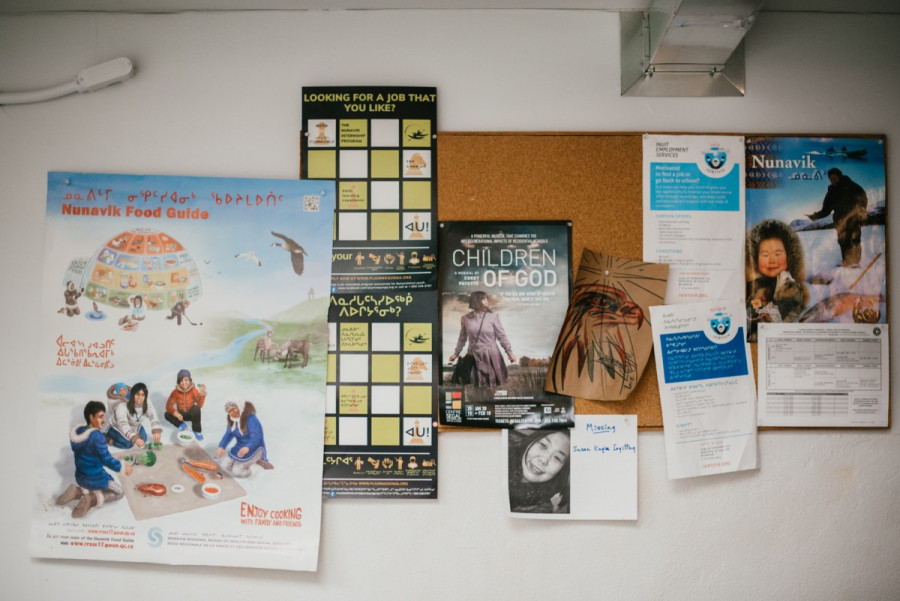
“Often people will come here and be working through trauma. And we try to create a space where they can do that.”
He gave an example to illustrate what this looks like in practice. “About six months ago, at our old site, there was [an Inuk] woman who came in mid-afternoon.” She had just discovered the suicide of another family member. She had been drinking and was “screaming at the top of her lungs.”
“For most places, in that circumstance, that person […] has about one to two minutes. And then two large men appear. They take you by the arm, you go out the front door, and, if you’re lucky, that’s the end of the exchange. And that’s broadly a social norm. Whether that’s on a university campus, or in a hospital, or in a mall, or wherever you might be—a homeless centre.”
Chapman described staff tending to clients who had been woken up or otherwise disturbed. Staff thanked people for their patience and understanding.
“Well, not everybody’s happy with that,” he said. “A couple people got up, stormed off.” Chapman said the centre aims to create a culture of humanity. “It comes with a cost.”
Chapman estimates the centre still receives about 65 per cent of the clientele who frequented the previous location near Cabot Square in Westmount.
“[Cabot Square] has been, at least for the last 30 or 40 years, a place for meeting up,” said Mark Watson, an associate professor of anthropology and sociology at Concordia whose research area includes Inuit mobility and urban Indigenous studies. “It’s a place that’s known within the Indigenous community as a place to meet and to share information.”
“We don’t have many agencies left in the area, really,” said Marina Boulos-Winton, executive director of Chez Doris, a women’s day centre located near Cabot Square. “We’re the only one left of its kind.”
“Right across the street from us, there was a building bought up,” said Chapman. “It was the old hospital. [It became] a $400 million condo development. When we learned that, we knew our days were numbered,” he said, as the centre’s presence across the street could affect the value of the project.
Boulos-Winton recalled a situation in the mid-90s affecting Chez Doris. “There was a push to drive us out,” she explained. “There was a developer suggesting that with the new high rises eventually going up that it would be perfect to turn Chomedey St. into the next Crescent St. But there was pushback from everybody because that was a perfect example of gentrification.”
Chapman took a moment to draw a distinction between theoretical and actual gentrification. “Let me show you actual gentrification,” he said, getting up to retrieve a bin overflowing with citations brought in by clients.
The bin, which he has often shown to media, was unavailable, but even in its absence it made a vivid point. When new, more affluent residents enter a community, “the person who’s sleeping on the park bench in Cabot Square is a problem in a way they weren’t before,” he said. “All of a sudden there are a lot more concerns being reported to police. […] ‘911, there’s a person sleeping on a park bench.’”
Chapman said police in that area have been giving out more tickets for minor infractions. “They were sleeping on that bench for years, then all of a sudden they’re getting tickets for it.” He said this causes the homeless to spend time in other areas, such as Place des Arts.
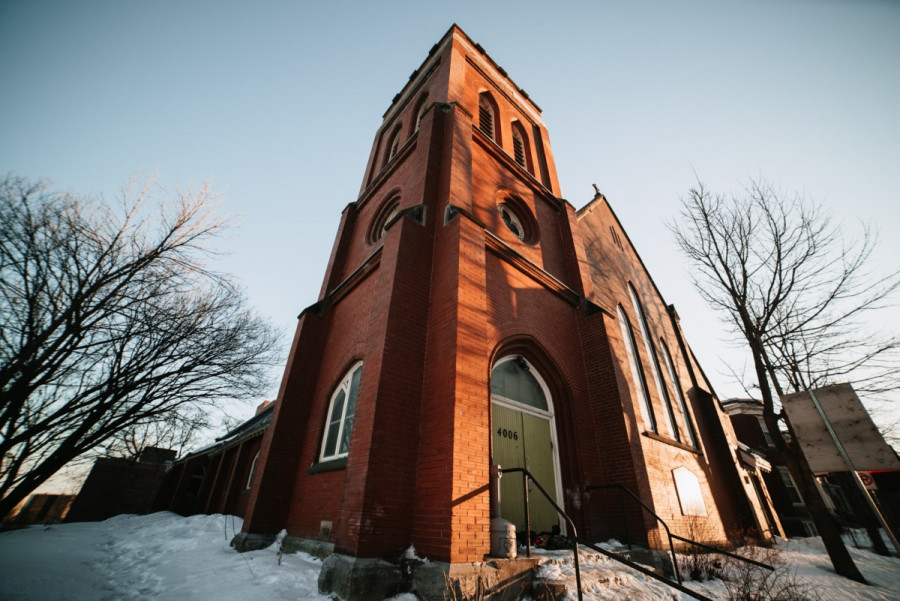
He noted that gentrification is a complex process. “Theoretical gentrification is [something like] money is coming into the area so therefore you’re being forced out. The problem is, there’s other factors. Our case is directly related to the closing of St. Stephen’s church in December of 2016,” he said.
“That’s the challenge with the gentrification narrative, is there’s side narratives which make it more complicated.”
The Open Door had hoped to buy the building, a long shot considering its funding realities, but the building had been sold. They were able to continue to stay into summer 2017 but had to scramble for a new facility.
“It’s a bit complicated when you’re a homeless centre,” he said.
Chapman estimates they saw 40 buildings in all, at one point closing in on a location in a church in Little Burgundy, only three blocks away from where they had been.
They were in the process of finalizing their plans when they encountered resistance from the community. Chapman blames a TV news story for consolidating the opposition that ultimately derailed the lease. “After that we realized, okay, boy, we have to be pretty careful about this moving process. We’re looking, but we can’t tell people we’re looking. Not too much. ‘We’re looking, but not in your neighbourhood!’”
“The reality for any charity is that once you do find a location,” said Boulos-Winton, “you have to be quiet about it, so as not to stir controversy and fear.” Chez Doris owns its building, which Boulos-Winton said gives their organization a degree of insulation from shifts in the surrounding community.
“We just had to keep looking in a wider [and wider radius],” Chapman said, “Until eventually we found [the Parc Ave. location], which was quite a lot further out of the neighbourhood than what we were initially hoping for.”
If The Open Door had some initial apprehensions, they weren’t the only ones.
“From all corners, we heard, ‘You’re going to need to adapt to this new neighbourhood.’ It comes in lovely language like that. But underneath it all is, ‘You need to change your approach.’”
— David Chapman
The Petition To Keep The Open Door Off Parc Ave.
“Dear neighbours and friends […] This project was decided without the knowledge of the citizens of our neighbourhood, without consultation or consent. Indeed, it will bring a large population of new homeless that will sweep Parc Ave. and neighbouring streets from all directions,” reads the petition submitted to the Plateau-Mont-Royal borough council on July 3 2018, signed by around 40 neighbourhood businesses.
That opposition would come later. First The Open Door had to overcome its own doubts about the location.
The Open Door’s main intervention worker, a former client, “would come around and show me pictures of people on his phone, because he was regularly in this neighbourhood,” Chapman explained. “And he said, ‘Hey look, here’s so-and-so who regularly uses our centre [and they’re on] Parc Ave. Here’s another person.” He continued to show Chapman photos of clients who frequented the Cabot Square location.
“I was like, ‘holy cow—it’s true. The people who were at our centre were already here,’” Chapman said. “I couldn’t deny it. There they were, sitting on Parc Ave., panhandling. And meanwhile, just a couple days before we saw them at The Open Door, Atwater Ave. and René-Lévesque Blvd. W.”
Knowing the importance of serving the unhoused where they are, this was a determining factor for Chapman.
“It’s not […] a quaint little church anymore,” said Greg Jones, a volunteer and client. “It’s a large basement. Everything is a few more steps to get to. We have to get used to that dynamic.
“We’re twice as big as we were. Essentially we jumped into the middle of a community that did not have a drop-in centre of the kind we are,” he said, noting The Open Door now attracts a combination of clients from the previous location and a new crowd from around Parc Ave.
If not for The Open Door, Jones suggested, people would be instead left stranded in parking lots, behind stores, in the Metro system and on the street corner. “There’s a camaraderie [here], a family feeling,” he said. “You’re free to come in from the cold and to rest your weary bones.”
Geta Etorolopiaq, a client of The Open Door, likes the new location because of its closer proximity to the Native Friendship Centre, located at St. Laurent Blvd. and Ontario St.
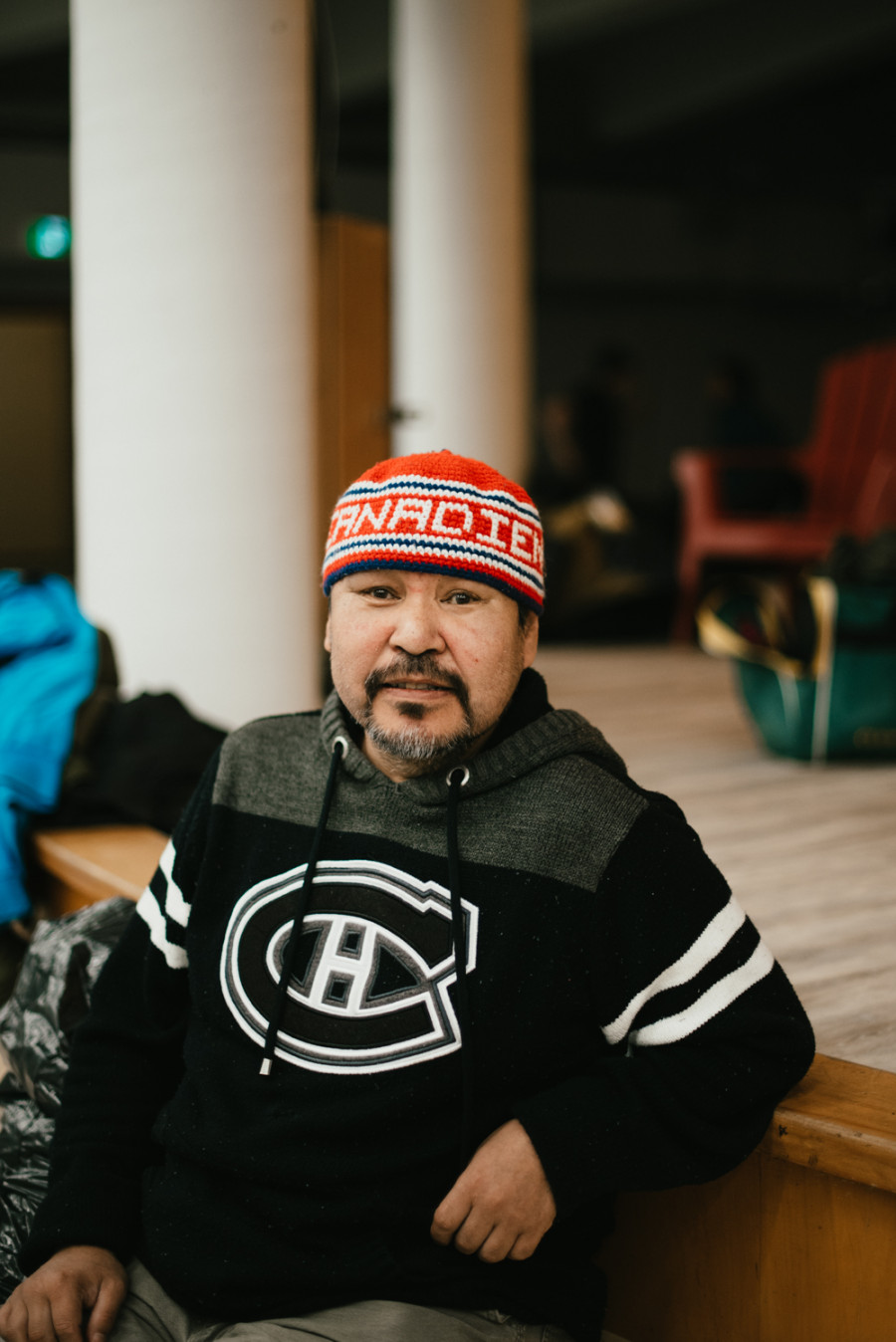
“There’s no such thing as a perfect place for a shelter,” said Maeva Vilain, borough councillor for the area encompassing Milton Park. “Looking for the perfect place is a bit of an excuse not to find a place. A perfect place doesn’t exist,” said Vilain. “We had a lot of homeless people [in the vicinity of the new location] before the arrival of The Open Door. There was really a need for a resource for them.”
She mentioned similar organizations in the neighbourhood which some people initially feared, including one which opened in front of an elementary school, but which have not posed problems. She said since The Open Door began its operations in December, her email inbox has been clear of complaints.
“I think [incompatibility] is a myth we must deconstruct and show people it can be a very peaceful cohabitation,” she explained. “Maybe as an elected official my contribution can be to build links between people who are in a situation of homelessness and people who have a home. I think we need to build that understanding.” Vilain noted that the city had no authority to intervene in any case.
For those who use the centre’s services, the break from the street allows an opportunity for reflection. Etorolopiaq compares being preoccupied with the same things each day to being stuck in a hamster’s wheel. “We don’t know who we are because we always do what we do,” he said. “Do something different and find out who you are. When you do the same thing over and over again, that’s the only thing you know.”
He believes more programs, such as mental health services, are needed to assist those trapped in the cycle of homelessness.
“I think it’s important to see it in a pragmatic way,” said Vilain. There are different issues when a homeless centre arrives, and we must understand the issues one-by-one, and assign a solution to each of these issues.
“One of my beliefs also is that time will help,” Vilain said.
Chapman characterized the complaints of businesses, at least as cited in the petition, as broadly irrational, but he did have some sympathy for a fear he identified as legitimate.
“You’ll have some business owners that are barely making ends meet. They’re barely squeaking by with their business, and they’re worried that if someone’s panhandling near the front of their business, that that’s going to reduce the number of people that come through the door. And they’re afraid that while they were in the black, now they’re not going to be,” he explained. “And you can say, ‘Okay, I can see how a person would be afraid of that.’”
Other concerns, such as fears for general public safety, he dismissed. “The police have been helpful in dispelling that fear [at public meetings],” he added.
The petition submitted to the city cites concerns about “several hundred newcomers,” and the consequences of the presence of “alcoholism and chronic addiction,” specifically citing the Inuit community.
The petition also expresses a fear of “a negative impact on the economic and social life of” the community. Its overarching demand was that the project be stopped until a study of its impact could be conducted and publicly debated.
Yvon Plourde, general manager of St-Hubert Express on Parc Ave., who signed the petition, cited several concerns which he believed could affect business. These included homeless in the area using their washrooms and leaving them dirty, asking customers for money, using the beverage station and sleeping in the underground parking lot. However, Plourde said he had not noticed a recent change, but he expects things to worsen in summer.
“I sympathize with the [homeless], but definitely we don’t know the outcome of what will happen,” said Zouheir Tabbara, owner of E-Media Copy inside Les Galeries du Parc, who also signed the petition. “I am inside the mall, and it’s all under control here. Something that might happen in the neighbourhood, the residents in the buildings can see more of what’s happening than I see here.”
He had not worried about an impact on his business when he contributed his name. “Maybe if I were outside I might be worried, I don’t know. […] Time is on [The Open Door’s] side to see if there are any social changes, quietness, any abnormalities.
“[I could change my mind] if there is no harm to the society or the neighbourhood,” he said. “These people are homeless. They don’t have anyone to look after them. If the facility is good for them, that’s okay, but if it comes to the point where you are affected, in one way or another, then you will raise your finger and say ‘stop.’”
He said he feels a connection to the existing community. “They are my clients. I’ve been here for a long time.” He was thinking of his customers when he agreed to sign, he said.
Not all the surrounding residents were opposed to the centre, however.
“It’s often a very, very small number of people who are in opposition with the arrival of a homeless centre, but they are very vocal,” said Vilain. “There was also a very big movement of solidarity. [A supportive letter] has been signed by more people than the people who were against the centre,” but the opposition got more media coverage, she said.
The supportive letter garnered more than six times as many signatures as the petition which opposed it. Vilain believes Milton Park’s housing cooperative’s tradition of solidarity helped ease The Open Door’s integration into the neighbourhood.
The letter begins, “We, the undersigned, believe in building a neighbourhood inspired by values of compassion and openness. Homelessness in Montreal is increasing as gentrification dispossesses the poor.”
It does have one thing in common with the opposing petition, which is a sentiment of a lack of consultation. “We think that opposition to [The] Open Door is misguided, largely based on the unfortunate secrecy which surrounded its introduction to our neighbourhood. We believe that transparency and openness always brings the best solutions.” It goes on to say, “We encourage our fellow residents to see the benefits of this project and act in compassion towards our neighbours who live in more difficult circumstances than ourselves.”
“It was a very proud moment to stand up there and speak my piece as a citizen,” said Wayne Wood, who presented the supportive open letter to borough council in September, including about 260 signatures, on behalf of the Milton Park Citizens Committee of which he is a member.
“I’m getting to learn a lot thanks to [The] Open Door being there,” he said. “I find myself talking about [Indigenous rights] all the time, with my friends, with my family, social media.”
He echoed the feeling that proximity fosters compatibility and cohabitation. “[The] Open Door is my window into the world of homeless people. [The] Open Door is open to everyone. I’ve made a habit of going on a regular basis.”
“I’m spending more time listening than talking,” he continued.
He recently bought a soapstone of a beluga whale carved at The Open Door.

According to Watson, there are 1,000-1,500 Inuit in Montreal. “Inuit move to the city for many reasons,” he said. Education, healthcare, employment and housing are among necessities sometimes in short supply in Nunavik. If unable to find these things, some Inuit may find themselves stuck in Montreal, homeless. “That’s why the Inuit population is, within the Indigenous homeless population, the biggest number.”
Inuit represent 10 per cent of Montreal’s Indigenous demographic but constitute upwards of 45 per cent of the Indigenous homeless population, according to a 2017 paper by Watson which cites a figure from the Makivik Corporation.
Watson believes, however, that the narrative around Inuit in Montreal can be problematic. “While that is one part of the population, and it is perhaps the most visible downtown, the Inuit community in Montreal is very varied. You have students, you have business people, people who are employed, work for Inuit organizations […] and [do] other kinds of work.”
It’s important, Watson said, to “move away from conflating Inuit in the city with homelessness—but, this is a key thing, without neglecting or ignoring the difficult situations that [many Inuit] find themselves in.”
He believes it’s important to recognize that the Inuit community in Montreal is very varied and extends beyond the homeless centres. “There is an emerging middle class of Inuit in the city.”
“Inuit are not outsiders in the city. Inuit [belong] in the city,” he said.
If people better understood Inuit adversities, “hopefully it would open up a more productive dialogue and move beyond the kind of discrimination and racism which one often finds, going back to the Villeray incident, for example,” he said, referring to a 2010 situation in which neighbourhood opponents succeeded in disrupting the entry of an Inuit care home, which would have provided a place for Inuit to stay in Montreal when coming to the city for medical treatment according to CBC News.
“Sadly there is a quiet racism which exists still in the City of Montreal,” said Chapman. “It is often directed against Inuit.” He blames “a lack of understanding of Canadian history, and what it’s like to face 100 years of cultural genocide.”
With files from Léna Seltzer

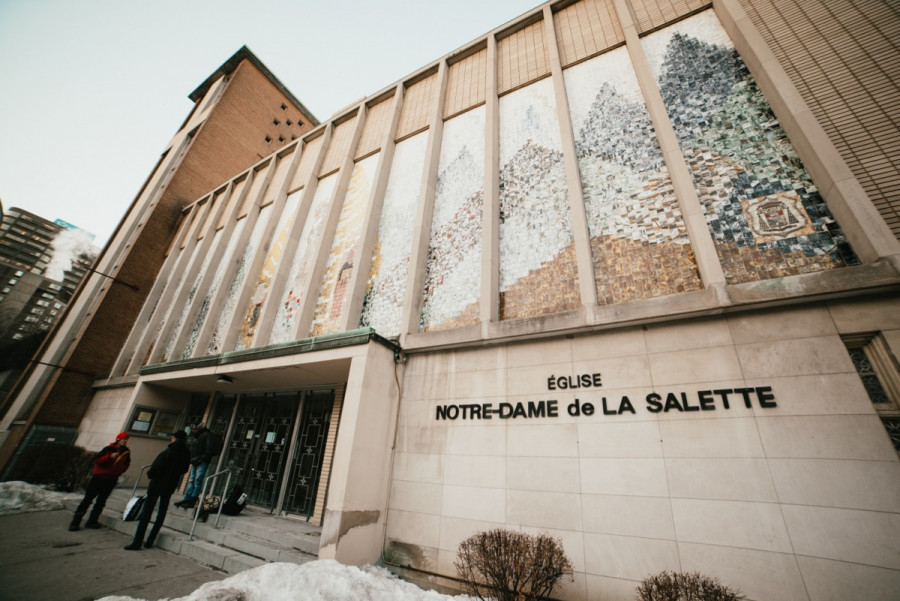
_600_832_s.png)

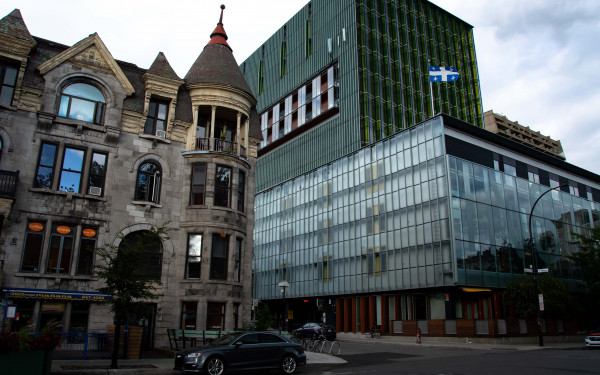
_600_375_s_c1.png)
